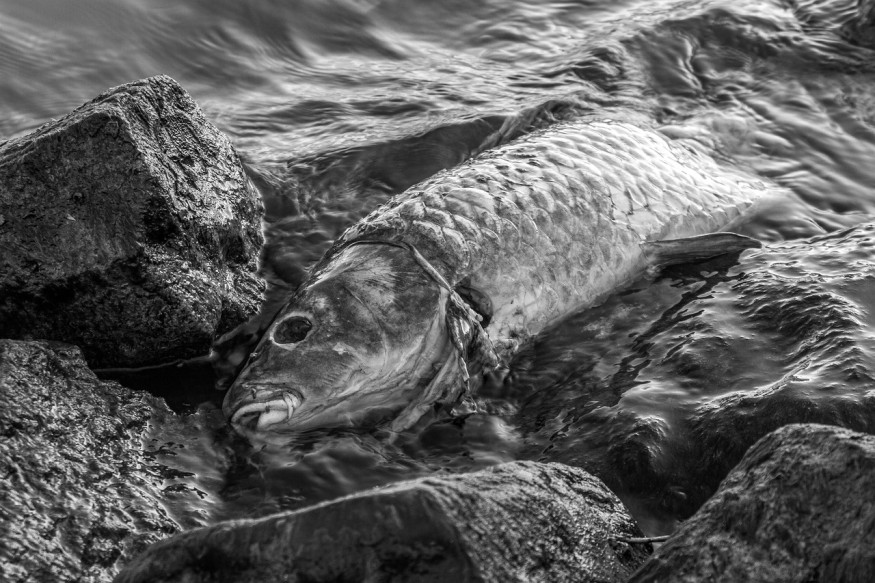All living things die and that is a universal fact. Although death may seem terrifying, it is something that all organisms big or small must experience. Perhaps, learning about every stage of the process of death can take some of the mystery out of what happens during the final moments of a person's life and what happens to the body after it dies.

The Final Hours
The body of an old person dying due to age or ill health usually experiences their body beginning to shut down. A few weeks before their final hours, they may experience greater fatigue, appetite loss, and losing breathing control. But there are some who also experience high bursts of energy before growing more tired.
Wayne State University's director of the mortuary science program Mark Evely told Newsweek that body temperature may increase or decrease prior to death depending on the conditions of the patient. Some may experience hypostasis or the settling of blood in the dependent areas of the body.
Those who had a cardiac arrest or traumatic brain injury or who come close to dying but survived sometimes have a near-death experience. Cognitive and parapsychological researcher Neil Dagnall from Manchester Metropolitan University told the news outlet that there are stages of this in which they would feel peace and contentment, psychic detachment from the body, rapid movement in a dark tunnel, and emerging into the bright light.
But physically, the heart will stop and the person will cease breathing, and within a few minutes, the brain shuts down. This scenario may differ in every person depending on the cause of death.
How Long Does It Take To Die?
According to Cleveland Clinic, it depends on the person's health, treatments, and cause of death. Everyone has their own timeline, but the most common causes of death worldwide are heart disease, chronic lung disease, and cancer. Treatments not only prevent death but also prolong the dying process.
But in terms of whether tissues and organs will continue to function for a limited time after the person stopped breathing, insect decomposition ecologist Phili Barton said that it could take a matter of seconds to minutes.
There were some speculations on how long a person could live after being decapitated, fueled by rumors about victims of guillotine who showed emotion post-separation and the famous case of Mike the chicken who remain alive for 18 months even after his head was removed.
Stages of Decomposition
The body breaks down into simpler organic matter through biological and chemical processes after death. The process could take from a few weeks to years, depending on certain factors. Below are the stages of decomposition, according to Science Focus:
- Rigor mortis- The first stage involves the onset of pallor mortis or when the body starts to turn pale due to lack of blood circulation. Rigor mortis sets in around two to six hours after death in which cells break down due to lack of oxygen and nutrients. If the body is left out, insects will immediately appear 10 minutes after death.
- Bloating- Bacteria in the body after death could reproduce and feed inside. It takes them about 58 hours to spread in internal organs and produce gas that causes the abdomen to bloat. In some temperatures or climates, bloating could occur between two to three days.
- Shedding of Skin- Due to the gas buildup, it increases pressure in the body and pushes fluids that could cause the layers of skin and outer layers to slough off.
- Turning Green- As there is no longer oxygen, hemoglobin in the body binds with sulfur and fills the arteries and veins, giving the greenish-black appearance.
- Liquids Going Out- The increased pressure inside the body causes the fluids and liquified organs out of the body. Some are also known to explode.
- Attracting Insects- The chemicals the dead body emits attract more flies and soon after other insects that will feed on the body.
- Skeletonization- The final stage is when all the soft tissue is fully lost. Bleaching and exfoliation usually begin nine months after exposure. In the following months or years, wind, rain, erosion, and abrasion take over and the bones will be disarticulated.
RELATED ARTICLE: Skin Beetles Feast Off the Skin of a Decaying Pompano Fish, Revealing Its Skeleton in a Time-Lapse Video [Watch]
Check out more news and information on Decomposition in Science Times.
© 2026 ScienceTimes.com All rights reserved. Do not reproduce without permission. The window to the world of Science Times.











